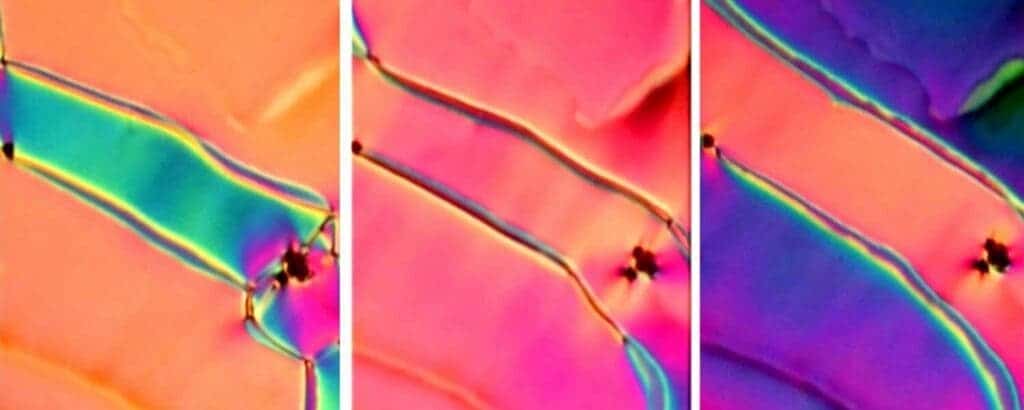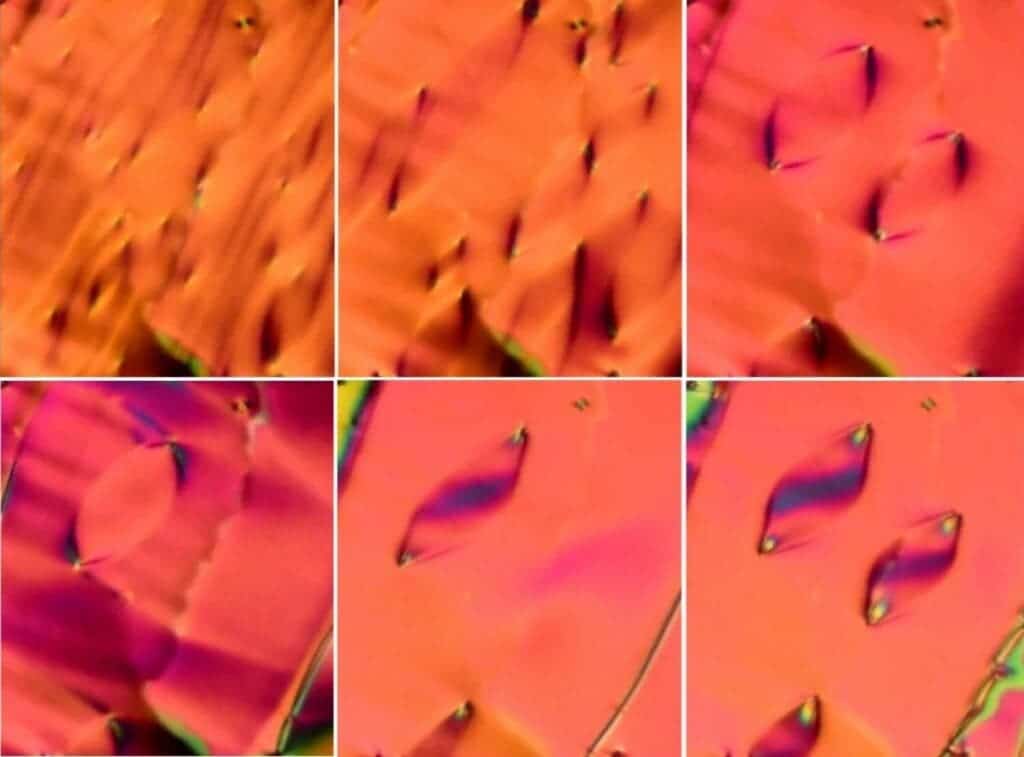
After the idea was first described theoretically over 100 years ago, researchers at the University of Colorado have now demonstrated that liquid crystals can indeed exist in a so-called “ferroelectric nematic” phase. The discovery could usher in a new class of advanced materials.
Neither liquid nor solid
You might not be familiar with nematic liquid crystals, but you most likely have heard about LCDs, or liquid crystal displays. In order to display things on the screen, LCDs operate by applying a varying electric voltage to a layer of liquid crystal, thus changing their optical properties.
This is possible thanks to the material’s intriguing mix of both fluid- and solid-like properties, which enable them to manipulate light.
Nematic liquid crystals are made of rod-shaped molecules, with one end carrying a positive charge and the tail-end carrying a negative charge. Due to this property, in a ‘soup’ of nematic liquid crystals, half of the molecules will point left and the other half will point right, with the direction chosen at random.
Turns out, these liquid crystals can exist in another phase known as the ferroelectric nematic liquid crystal phase. In such liquid crystals, the molecules all point in the same direction, either left or right. Physicists call this behavior polar ordering.
“There are 40,000 research papers on nematics, and in almost any one of them you see interesting new possibilities if the nematic had been ferroelectric,” Noel Clark, professor of physics and director of University of Colorado Boulder’s Soft Materials Research Center (SMRC), said in a statement.
That possibility is very much real now, and it took more than 100 years for us to have this confirmation of a new liquid crystal phase.
At the turn of the last century, Nobel Laureates Peter Debye and Max Born first proposed that liquid crystals could fall into a polar ordered state, as long as the molecules had the right design.
Later, other researchers showed that some solid crystals could point their molecules in uniform directions, allowing their direction to be reversed under the presence of an electric field. Such solid crystals are known as “ferroelectrics” due to their similarities with magnets.
However, the hunt for ferroelectric liquid crystals proved far more challenging than physicists imagined — until Clark heard about an organic molecule called RM734, developed years ago by another group of British and Slovenian scientists.
At high temperature, RM734 exhibited a conventional nematic liquid crystal phase, like the kind found in modern LCDs. At lower temperatures, another unusual phase appeared.
When Clark and colleagues imaged this unusual phase under the microscope they were struck by a palette of colors flashing towards the edges of the cell containing the liquid crystal.

“It was like connecting a light bulb to voltage to test it but finding the socket and hookup wires glowing much more brightly instead,” he said.
Subsequent experiments revealed that, in this phase, RM734 was 100 to 1,000 times more responsive to electric fields than typical nematic liquid crystals, indicating strong polar order.
Upon further inspection, the researchers found distinct domains forming spontaneously in the liquid crystals when they were cooled. These patches contained molecules that were aligned in the same uniform direction.
“That confirmed that this phase was, indeed, a ferroelectric nematic fluid,” Clark said.
Next, the researchers plan on finding out how exactly RM734 is able to have this property. They are working on computer simulations to answer this question.
“This work suggests that there are other ferroelectric fluids hiding in plain sight,” Clark said. “It is exciting that right now techniques like artificial intelligence are emerging that will enable an efficient search for them.”
The findings appeared in the journal Proceedings of the National Academy of Sciences.


